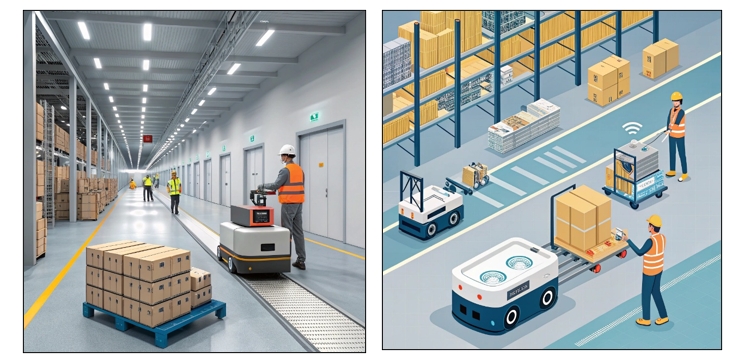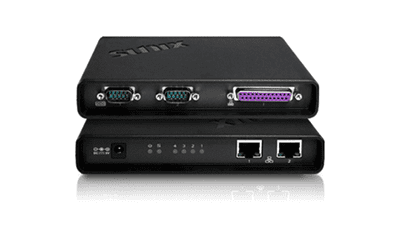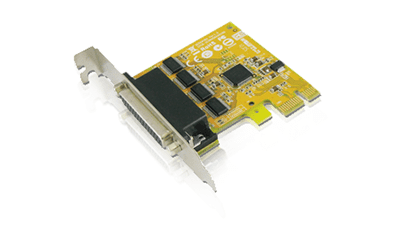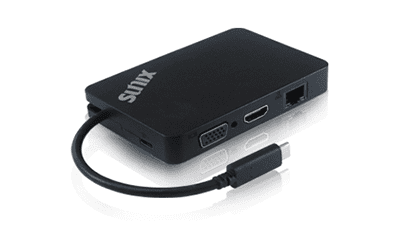Applications of SUNIX CAN FD Communication Card in Smart Manufacturing
I. Introduction
With the rapid development of Smart Manufacturing, the demand for data transmission speed, stability, and modular integration in industrial environments continues to grow. CAN FD (Controller Area Network with Flexible Data-rate), as an extension of the CAN protocol, provides higher data rates and larger payloads, making it an essential communication technology in modern manufacturing. This article explores the application scenarios and technical advantages of SUNIX CAN FD expansion cards in the field of smart manufacturing.
II. Features of SUNIX CAN FD Communication Card
| Specification / Description | |
|---|---|
| Supported Interfaces | PCIe, Mini PCIe, M.2, and other industrial standards |
| Communication Protocol | CAN 2.0A/B, CAN FD |
| Data Rate | Up to 8 Mbps for CAN FD |
| Software Support | Drivers for Windows / Linux and Windows API |
| Application Fields | Smart Factory, Smart Healthcare, AMR Robots, Smart Warehousing |
| Safety & Stability | Error detection, frame filtering, and multi-channel isolation design |
III. CAN FD Architecture in Smart Manufacturing
(CAN FD Nodes)
- Includes optical, temperature, pressure, vibration, and position sensors.
- Transmits real-time data to the industrial controller via CAN FD bus.
- Supports multi-node communication, low latency, and high noise immunity.
(PLC / Motor / BMS / AGV)
- Modules communicate with the main controller via the CAN FD expansion card.
- Supports command control, status feedback, and error reporting.
- Compatible with CANopen FD or custom protocols.
(IPC / MCU / MPU)
- Installs CAN FD expansion cards (PCIe / M.2 / USB).
- Performs real-time data processing, predictive maintenance, and AI analytics.
- Integrates data via HyperRAM, USB4, or Ethernet.
(MES / ERP / SCADA)
- Receives edge data for process management and decision analysis.
- Supports data traceability, quality control, and production scheduling.
- Integrates CAN FD data through OPC UA or MQTT protocols.
IV. Application Scenarios in Smart Manufacturing
1. Multi-Axis Robot Control
- Requirement: Real-time transmission of position, speed, and torque parameters.
- CAN FD Advantage: High-frequency updates, low latency, and multi-channel synchronization.
- Expansion Form: PCIe / M.2 CAN FD cards installed in industrial controllers.
2. AI Visual Inspection and Sensor Networks
- Requirement: Integration of optical, temperature, and distance sensor data.
- CAN FD Advantage: High-speed data packets, strong anti-interference capability.
- Expansion Form: USB CAN FD module or embedded MCU.

3. PLC and Process Module Communication
- Requirement: Command transmission, status reporting, and fault notification.
- CAN FD Advantage: Supports CANopen FD and multi-node communication.
- Expansion Form: DIN Rail-mounted CAN FD communication module.

4. AGV / AMR Autonomous Mobile Robots
- Requirement: Battery management, motor control, and navigation sensor integration.
- CAN FD Advantage: Real-time obstacle avoidance, task synchronization, and modular collaboration.
- Expansion Form: PCIe Mini / M.2 expansion cards installed in controllers.

V. Technical Advantages and Benefits
| Indicator | CAN | CAN FD (SUNIX) | Practical Benefits |
|---|---|---|---|
| Data Transmission Efficiency | Low | High (64 bytes/frame) | Reduced communication latency and faster response time |
| System Scalability | Limited | High | Supports multi-module concurrent operations |
| Fault Tolerance & Stability | Average | Excellent | Lower communication error rate and improved reliability |
| Integration Cost | High | Moderate | Coexists with legacy CAN systems, reducing upgrade costs |
| Development Support | Limited | Comprehensive (SDK/API) | Accelerates system integration and deployment |
VI. Product Selection and System Integration
| Application Scenario | Recommended Interface | Channel Count | OS Support | Special Requirements |
|---|---|---|---|---|
| Robot Control | PCIe / M.2 | 2–4 | Windows / Linux | Timestamping, Synchronization |
| AMR Controller | Mini PCIe / M.2 | 2–4 | Linux / RTOS | Sensor integration, Battery management |
| PLC Communication | DIN Rail Module | 1–2 | Windows / Linux | CANopen FD, Error reporting |
| Edge Computing Device | USB / PCIe | 2–4 | Windows / Linux | Data transmission, Protocol conversion |
VII. Conclusion
CAN FD expansion cards are no longer exclusive to automotive electronics; they have become the high-speed, stable, and scalable communication backbone of Smart Manufacturing. Whether for robots, sensors, PLCs, AMRs, or energy systems, CAN FD provides robust connectivity. Selecting the right card and system architecture will be the key step toward upgrading the next-generation smart factory.
Articles
Use Cases
-
Hailo8 Application – Face Recognition
-
Hailo8 Application – ReID
-
Applications of SUNIX CAN FD Communication Card in Smart Manufacturing
-
SUNIX CAN FD Communication Card in Railway Transportation Applications
-
SUNIX CAN FD Communication Card in MRI Applications
-
External Storage System Application High-Performance Architecture Based on SUNIX OCuLink Expansion Card
-
UPB2430 USB4 Daisy Chain Application: Unlocking a High-Performance Chaining Experience
-
Application of SUNIX CAN FD Communication Card in Smart Mobile Robots (AGV/AMR)
-
Application of SUNIX CAN FD Card in Automotive Repair Station Diagnostic Systems
-
SUNIX CAN FD Card in Modular Energy Storage Systems
-
Applications and Benefits of CAN FD in Automotive Service Station Diagnostic Systems
-
Application of CAN FD in Electric Vehicle Battery Management Systems
-
CANbus Will Play Critical Role in Electric and Autonomous Vehicles by OEM OFF-HIGHWAY
Applications of SUNIX CAN FD Communication Card in Smart Manufacturing
I. Introduction
With the rapid development of Smart Manufacturing, the demand for data transmission speed, stability, and modular integration in industrial environments continues to grow. CAN FD (Controller Area Network with Flexible Data-rate), as an extension of the CAN protocol, provides higher data rates and larger payloads, making it an essential communication technology in modern manufacturing. This article explores the application scenarios and technical advantages of SUNIX CAN FD expansion cards in the field of smart manufacturing.
II. Features of SUNIX CAN FD Communication Card
| Specification / Description | |
|---|---|
| Supported Interfaces | PCIe, Mini PCIe, M.2, and other industrial standards |
| Communication Protocol | CAN 2.0A/B, CAN FD |
| Data Rate | Up to 8 Mbps for CAN FD |
| Software Support | Drivers for Windows / Linux and Windows API |
| Application Fields | Smart Factory, Smart Healthcare, AMR Robots, Smart Warehousing |
| Safety & Stability | Error detection, frame filtering, and multi-channel isolation design |
III. CAN FD Architecture in Smart Manufacturing
(CAN FD Nodes)
- Includes optical, temperature, pressure, vibration, and position sensors.
- Transmits real-time data to the industrial controller via CAN FD bus.
- Supports multi-node communication, low latency, and high noise immunity.
(PLC / Motor / BMS / AGV)
- Modules communicate with the main controller via the CAN FD expansion card.
- Supports command control, status feedback, and error reporting.
- Compatible with CANopen FD or custom protocols.
(IPC / MCU / MPU)
- Installs CAN FD expansion cards (PCIe / M.2 / USB).
- Performs real-time data processing, predictive maintenance, and AI analytics.
- Integrates data via HyperRAM, USB4, or Ethernet.
(MES / ERP / SCADA)
- Receives edge data for process management and decision analysis.
- Supports data traceability, quality control, and production scheduling.
- Integrates CAN FD data through OPC UA or MQTT protocols.
IV. Application Scenarios in Smart Manufacturing
1. Multi-Axis Robot Control
- Requirement: Real-time transmission of position, speed, and torque parameters.
- CAN FD Advantage: High-frequency updates, low latency, and multi-channel synchronization.
- Expansion Form: PCIe / M.2 CAN FD cards installed in industrial controllers.
2. AI Visual Inspection and Sensor Networks
- Requirement: Integration of optical, temperature, and distance sensor data.
- CAN FD Advantage: High-speed data packets, strong anti-interference capability.
- Expansion Form: USB CAN FD module or embedded MCU.

3. PLC and Process Module Communication
- Requirement: Command transmission, status reporting, and fault notification.
- CAN FD Advantage: Supports CANopen FD and multi-node communication.
- Expansion Form: DIN Rail-mounted CAN FD communication module.

4. AGV / AMR Autonomous Mobile Robots
- Requirement: Battery management, motor control, and navigation sensor integration.
- CAN FD Advantage: Real-time obstacle avoidance, task synchronization, and modular collaboration.
- Expansion Form: PCIe Mini / M.2 expansion cards installed in controllers.

V. Technical Advantages and Benefits
| Indicator | CAN | CAN FD (SUNIX) | Practical Benefits |
|---|---|---|---|
| Data Transmission Efficiency | Low | High (64 bytes/frame) | Reduced communication latency and faster response time |
| System Scalability | Limited | High | Supports multi-module concurrent operations |
| Fault Tolerance & Stability | Average | Excellent | Lower communication error rate and improved reliability |
| Integration Cost | High | Moderate | Coexists with legacy CAN systems, reducing upgrade costs |
| Development Support | Limited | Comprehensive (SDK/API) | Accelerates system integration and deployment |
VI. Product Selection and System Integration
| Application Scenario | Recommended Interface | Channel Count | OS Support | Special Requirements |
|---|---|---|---|---|
| Robot Control | PCIe / M.2 | 2–4 | Windows / Linux | Timestamping, Synchronization |
| AMR Controller | Mini PCIe / M.2 | 2–4 | Linux / RTOS | Sensor integration, Battery management |
| PLC Communication | DIN Rail Module | 1–2 | Windows / Linux | CANopen FD, Error reporting |
| Edge Computing Device | USB / PCIe | 2–4 | Windows / Linux | Data transmission, Protocol conversion |
VII. Conclusion
CAN FD expansion cards are no longer exclusive to automotive electronics; they have become the high-speed, stable, and scalable communication backbone of Smart Manufacturing. Whether for robots, sensors, PLCs, AMRs, or energy systems, CAN FD provides robust connectivity. Selecting the right card and system architecture will be the key step toward upgrading the next-generation smart factory.
Articles
Use Cases
-
Hailo8 Application – Face Recognition
-
Hailo8 Application – ReID
-
Applications of SUNIX CAN FD Communication Card in Smart Manufacturing
-
SUNIX CAN FD Communication Card in Railway Transportation Applications
-
SUNIX CAN FD Communication Card in MRI Applications
-
External Storage System Application High-Performance Architecture Based on SUNIX OCuLink Expansion Card
-
UPB2430 USB4 Daisy Chain Application: Unlocking a High-Performance Chaining Experience
-
Application of SUNIX CAN FD Communication Card in Smart Mobile Robots (AGV/AMR)
-
Application of SUNIX CAN FD Card in Automotive Repair Station Diagnostic Systems
-
SUNIX CAN FD Card in Modular Energy Storage Systems
-
Applications and Benefits of CAN FD in Automotive Service Station Diagnostic Systems
-
Application of CAN FD in Electric Vehicle Battery Management Systems
-
CANbus Will Play Critical Role in Electric and Autonomous Vehicles by OEM OFF-HIGHWAY
Applications of SUNIX CAN FD Communication Card in Smart Manufacturing
I. Introduction
With the rapid development of Smart Manufacturing, the demand for data transmission speed, stability, and modular integration in industrial environments continues to grow. CAN FD (Controller Area Network with Flexible Data-rate), as an extension of the CAN protocol, provides higher data rates and larger payloads, making it an essential communication technology in modern manufacturing. This article explores the application scenarios and technical advantages of SUNIX CAN FD expansion cards in the field of smart manufacturing.
II. Features of SUNIX CAN FD Communication Card
| Specification / Description | |
|---|---|
| Supported Interfaces | PCIe, Mini PCIe, M.2, and other industrial standards |
| Communication Protocol | CAN 2.0A/B, CAN FD |
| Data Rate | Up to 8 Mbps for CAN FD |
| Software Support | Drivers for Windows / Linux and Windows API |
| Application Fields | Smart Factory, Smart Healthcare, AMR Robots, Smart Warehousing |
| Safety & Stability | Error detection, frame filtering, and multi-channel isolation design |
III. CAN FD Architecture in Smart Manufacturing
(CAN FD Nodes)
- Includes optical, temperature, pressure, vibration, and position sensors.
- Transmits real-time data to the industrial controller via CAN FD bus.
- Supports multi-node communication, low latency, and high noise immunity.
(PLC / Motor / BMS / AGV)
- Modules communicate with the main controller via the CAN FD expansion card.
- Supports command control, status feedback, and error reporting.
- Compatible with CANopen FD or custom protocols.
(IPC / MCU / MPU)
- Installs CAN FD expansion cards (PCIe / M.2 / USB).
- Performs real-time data processing, predictive maintenance, and AI analytics.
- Integrates data via HyperRAM, USB4, or Ethernet.
(MES / ERP / SCADA)
- Receives edge data for process management and decision analysis.
- Supports data traceability, quality control, and production scheduling.
- Integrates CAN FD data through OPC UA or MQTT protocols.
IV. Application Scenarios in Smart Manufacturing
1. Multi-Axis Robot Control
- Requirement: Real-time transmission of position, speed, and torque parameters.
- CAN FD Advantage: High-frequency updates, low latency, and multi-channel synchronization.
- Expansion Form: PCIe / M.2 CAN FD cards installed in industrial controllers.
2. AI Visual Inspection and Sensor Networks
- Requirement: Integration of optical, temperature, and distance sensor data.
- CAN FD Advantage: High-speed data packets, strong anti-interference capability.
- Expansion Form: USB CAN FD module or embedded MCU.

3. PLC and Process Module Communication
- Requirement: Command transmission, status reporting, and fault notification.
- CAN FD Advantage: Supports CANopen FD and multi-node communication.
- Expansion Form: DIN Rail-mounted CAN FD communication module.

4. AGV / AMR Autonomous Mobile Robots
- Requirement: Battery management, motor control, and navigation sensor integration.
- CAN FD Advantage: Real-time obstacle avoidance, task synchronization, and modular collaboration.
- Expansion Form: PCIe Mini / M.2 expansion cards installed in controllers.

V. Technical Advantages and Benefits
| Indicator | CAN | CAN FD (SUNIX) | Practical Benefits |
|---|---|---|---|
| Data Transmission Efficiency | Low | High (64 bytes/frame) | Reduced communication latency and faster response time |
| System Scalability | Limited | High | Supports multi-module concurrent operations |
| Fault Tolerance & Stability | Average | Excellent | Lower communication error rate and improved reliability |
| Integration Cost | High | Moderate | Coexists with legacy CAN systems, reducing upgrade costs |
| Development Support | Limited | Comprehensive (SDK/API) | Accelerates system integration and deployment |
VI. Product Selection and System Integration
| Application Scenario | Recommended Interface | Channel Count | OS Support | Special Requirements |
|---|---|---|---|---|
| Robot Control | PCIe / M.2 | 2–4 | Windows / Linux | Timestamping, Synchronization |
| AMR Controller | Mini PCIe / M.2 | 2–4 | Linux / RTOS | Sensor integration, Battery management |
| PLC Communication | DIN Rail Module | 1–2 | Windows / Linux | CANopen FD, Error reporting |
| Edge Computing Device | USB / PCIe | 2–4 | Windows / Linux | Data transmission, Protocol conversion |
VII. Conclusion
CAN FD expansion cards are no longer exclusive to automotive electronics; they have become the high-speed, stable, and scalable communication backbone of Smart Manufacturing. Whether for robots, sensors, PLCs, AMRs, or energy systems, CAN FD provides robust connectivity. Selecting the right card and system architecture will be the key step toward upgrading the next-generation smart factory.
Articles
Use Cases
-
Hailo8 Application – Face Recognition
-
Hailo8 Application – ReID
-
Applications of SUNIX CAN FD Communication Card in Smart Manufacturing
-
SUNIX CAN FD Communication Card in Railway Transportation Applications
-
SUNIX CAN FD Communication Card in MRI Applications
-
External Storage System Application High-Performance Architecture Based on SUNIX OCuLink Expansion Card
-
UPB2430 USB4 Daisy Chain Application: Unlocking a High-Performance Chaining Experience
-
Application of SUNIX CAN FD Communication Card in Smart Mobile Robots (AGV/AMR)
-
Application of SUNIX CAN FD Card in Automotive Repair Station Diagnostic Systems
-
SUNIX CAN FD Card in Modular Energy Storage Systems
-
Applications and Benefits of CAN FD in Automotive Service Station Diagnostic Systems
-
Application of CAN FD in Electric Vehicle Battery Management Systems
-
CANbus Will Play Critical Role in Electric and Autonomous Vehicles by OEM OFF-HIGHWAY
Applications of SUNIX CAN FD Communication Card in Smart Manufacturing
I. Introduction
With the rapid development of Smart Manufacturing, the demand for data transmission speed, stability, and modular integration in industrial environments continues to grow. CAN FD (Controller Area Network with Flexible Data-rate), as an extension of the CAN protocol, provides higher data rates and larger payloads, making it an essential communication technology in modern manufacturing. This article explores the application scenarios and technical advantages of SUNIX CAN FD expansion cards in the field of smart manufacturing.
II. Features of SUNIX CAN FD Communication Card
| Specification / Description | |
|---|---|
| Supported Interfaces | PCIe, Mini PCIe, M.2, and other industrial standards |
| Communication Protocol | CAN 2.0A/B, CAN FD |
| Data Rate | Up to 8 Mbps for CAN FD |
| Software Support | Drivers for Windows / Linux and Windows API |
| Application Fields | Smart Factory, Smart Healthcare, AMR Robots, Smart Warehousing |
| Safety & Stability | Error detection, frame filtering, and multi-channel isolation design |
III. CAN FD Architecture in Smart Manufacturing
(CAN FD Nodes)
- Includes optical, temperature, pressure, vibration, and position sensors.
- Transmits real-time data to the industrial controller via CAN FD bus.
- Supports multi-node communication, low latency, and high noise immunity.
(PLC / Motor / BMS / AGV)
- Modules communicate with the main controller via the CAN FD expansion card.
- Supports command control, status feedback, and error reporting.
- Compatible with CANopen FD or custom protocols.
(IPC / MCU / MPU)
- Installs CAN FD expansion cards (PCIe / M.2 / USB).
- Performs real-time data processing, predictive maintenance, and AI analytics.
- Integrates data via HyperRAM, USB4, or Ethernet.
(MES / ERP / SCADA)
- Receives edge data for process management and decision analysis.
- Supports data traceability, quality control, and production scheduling.
- Integrates CAN FD data through OPC UA or MQTT protocols.
IV. Application Scenarios in Smart Manufacturing
1. Multi-Axis Robot Control
- Requirement: Real-time transmission of position, speed, and torque parameters.
- CAN FD Advantage: High-frequency updates, low latency, and multi-channel synchronization.
- Expansion Form: PCIe / M.2 CAN FD cards installed in industrial controllers.
2. AI Visual Inspection and Sensor Networks
- Requirement: Integration of optical, temperature, and distance sensor data.
- CAN FD Advantage: High-speed data packets, strong anti-interference capability.
- Expansion Form: USB CAN FD module or embedded MCU.

3. PLC and Process Module Communication
- Requirement: Command transmission, status reporting, and fault notification.
- CAN FD Advantage: Supports CANopen FD and multi-node communication.
- Expansion Form: DIN Rail-mounted CAN FD communication module.

4. AGV / AMR Autonomous Mobile Robots
- Requirement: Battery management, motor control, and navigation sensor integration.
- CAN FD Advantage: Real-time obstacle avoidance, task synchronization, and modular collaboration.
- Expansion Form: PCIe Mini / M.2 expansion cards installed in controllers.

V. Technical Advantages and Benefits
| Indicator | CAN | CAN FD (SUNIX) | Practical Benefits |
|---|---|---|---|
| Data Transmission Efficiency | Low | High (64 bytes/frame) | Reduced communication latency and faster response time |
| System Scalability | Limited | High | Supports multi-module concurrent operations |
| Fault Tolerance & Stability | Average | Excellent | Lower communication error rate and improved reliability |
| Integration Cost | High | Moderate | Coexists with legacy CAN systems, reducing upgrade costs |
| Development Support | Limited | Comprehensive (SDK/API) | Accelerates system integration and deployment |
VI. Product Selection and System Integration
| Application Scenario | Recommended Interface | Channel Count | OS Support | Special Requirements |
|---|---|---|---|---|
| Robot Control | PCIe / M.2 | 2–4 | Windows / Linux | Timestamping, Synchronization |
| AMR Controller | Mini PCIe / M.2 | 2–4 | Linux / RTOS | Sensor integration, Battery management |
| PLC Communication | DIN Rail Module | 1–2 | Windows / Linux | CANopen FD, Error reporting |
| Edge Computing Device | USB / PCIe | 2–4 | Windows / Linux | Data transmission, Protocol conversion |
VII. Conclusion
CAN FD expansion cards are no longer exclusive to automotive electronics; they have become the high-speed, stable, and scalable communication backbone of Smart Manufacturing. Whether for robots, sensors, PLCs, AMRs, or energy systems, CAN FD provides robust connectivity. Selecting the right card and system architecture will be the key step toward upgrading the next-generation smart factory.
Articles
Use Cases
-
Hailo8 Application – Face Recognition
-
Hailo8 Application – ReID
-
Applications of SUNIX CAN FD Communication Card in Smart Manufacturing
-
SUNIX CAN FD Communication Card in Railway Transportation Applications
-
SUNIX CAN FD Communication Card in MRI Applications
-
External Storage System Application High-Performance Architecture Based on SUNIX OCuLink Expansion Card
-
UPB2430 USB4 Daisy Chain Application: Unlocking a High-Performance Chaining Experience
-
Application of SUNIX CAN FD Communication Card in Smart Mobile Robots (AGV/AMR)
-
Application of SUNIX CAN FD Card in Automotive Repair Station Diagnostic Systems
-
SUNIX CAN FD Card in Modular Energy Storage Systems
-
Applications and Benefits of CAN FD in Automotive Service Station Diagnostic Systems
-
Application of CAN FD in Electric Vehicle Battery Management Systems
-
CANbus Will Play Critical Role in Electric and Autonomous Vehicles by OEM OFF-HIGHWAY









